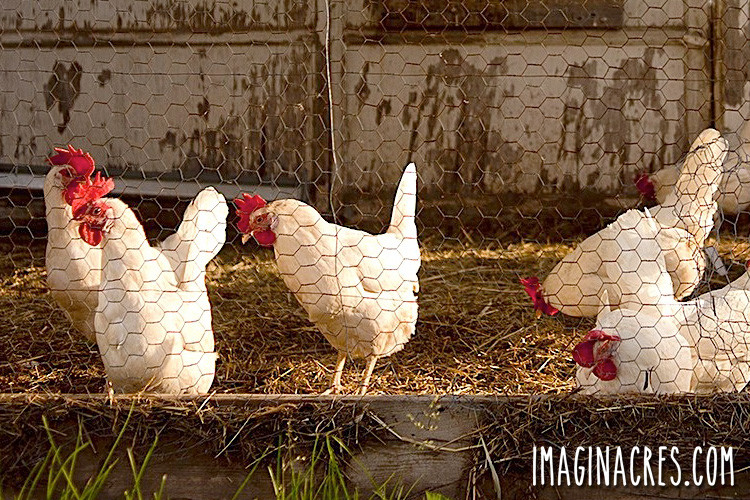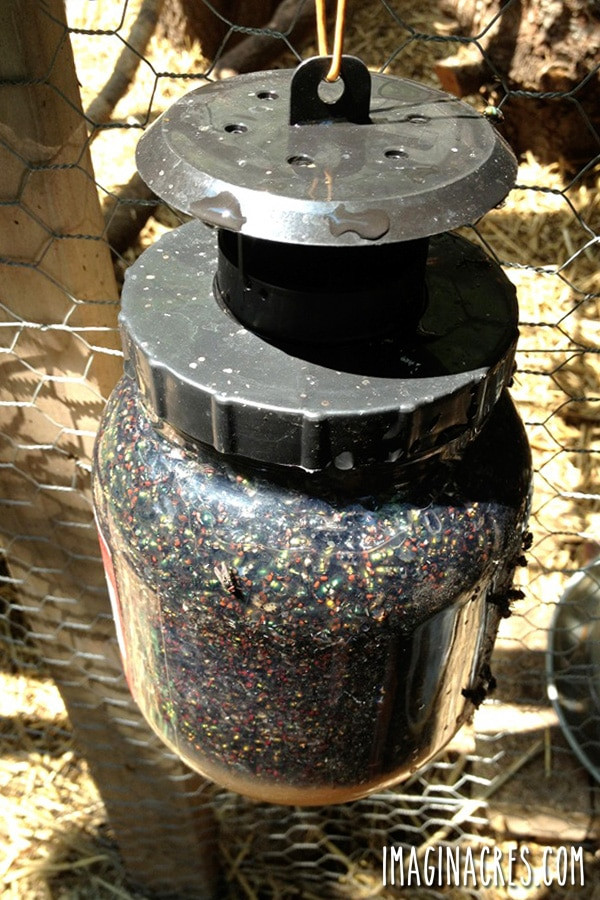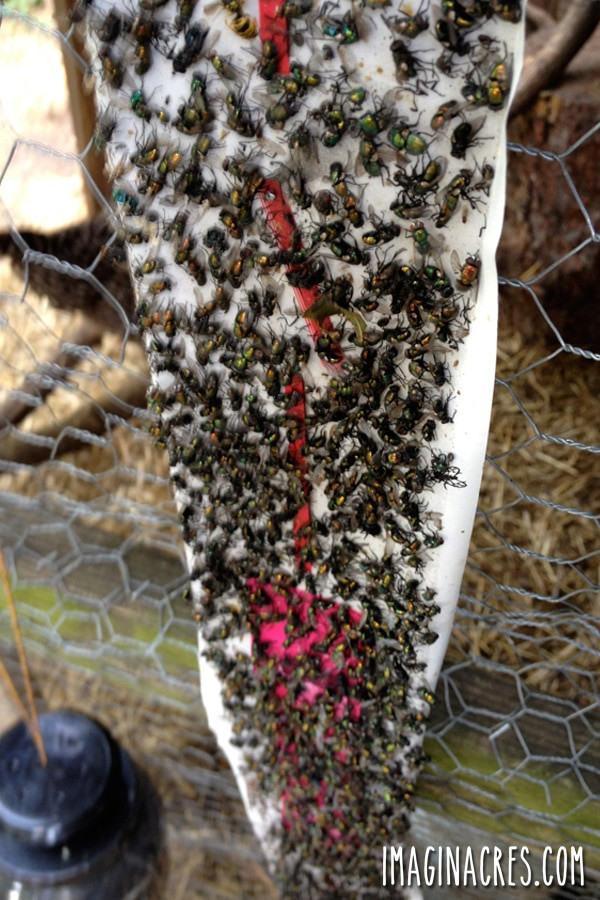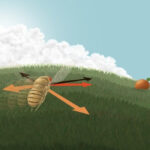Flies and chicken coops often seem to go hand in hand. If you’re raising chickens, dealing with flies is a common challenge, but it’s definitely not a battle you have to lose. Controlling flies in your chicken coop is crucial not just for your peace of mind, but for the health and comfort of your flock. These buzzing pests are more than just annoying; they can spread disease, stress your chickens, and create an unpleasant environment overall. Luckily, with the right strategies and a bit of consistent effort, you can effectively get rid of flies in your chicken coop and keep them at bay.
 White chickens in a clean chicken coop, representing the goal of fly control.
White chickens in a clean chicken coop, representing the goal of fly control.
Why Are Flies Attracted to Chicken Coops?
Understanding why flies thrive in chicken coops is the first step in tackling the problem. Chicken coops, unfortunately, offer a perfect breeding ground for flies due to a few key factors:
- Chicken Manure: This is the primary attractant. Fly species like house flies and bottle flies are drawn to decomposing organic matter, and chicken droppings are a plentiful source. Manure provides both food and a place for flies to lay their eggs.
- Moisture and Wet Bedding: Flies prefer moist environments for egg-laying and larval development. Spilled water, damp bedding, and humidity within the coop can contribute to fly infestations.
- Food Scraps and Spillage: Uneaten chicken feed, especially if it gets wet or spoiled, can also attract flies. Any decaying organic matter is an invitation for these pests.
- Warmth and Shelter: Chicken coops often provide warmth and shelter, especially during cooler months, making them an ideal habitat for flies to congregate and breed.
Effective Strategies to Eliminate Chicken Coop Flies
Getting rid of flies in your chicken coop requires a multi-pronged approach. No single solution is a magic bullet, but combining several methods will deliver the best and most sustainable results.
1. Thorough Coop Cleaning: The Foundation of Fly Control
The most critical step in getting rid of flies is a deep clean of your chicken coop and run. This involves removing the very things that attract flies in the first place:
- Regular Manure Removal: Scoop out chicken droppings daily or at least every other day. The more frequently you remove manure, the less opportunity flies have to breed. Pay special attention to areas under roosts and in nesting boxes where manure tends to accumulate.
- Bedding Replacement: Completely remove old bedding and replace it with fresh, dry material. Soaked or compacted bedding holds moisture and odors that attract flies. Consider using absorbent bedding materials like pine shavings or straw.
- Clean Feed and Water Areas: Regularly clean feed and water containers to remove spilled food and prevent water from becoming stagnant. Elevated feeders and waterers can help minimize spillage.
- Scrub Surfaces: Use a coop-safe cleaner to scrub down coop surfaces, including walls, floors, roosts, and nesting boxes. This will remove fly eggs, larvae, and lingering odors.
- Dry the Coop: Ensure the coop is thoroughly dry after cleaning. Good ventilation is essential for keeping the coop dry and reducing humidity, which discourages fly breeding.
2. Fly Traps: A Powerful Tool for Fly Reduction
Once you’ve cleaned the coop, fly traps can be incredibly effective in significantly reducing the fly population. There are various types of fly traps available, each with its own advantages:
a) Baited Fly Traps (Jug Traps)
These traps, like the Starbar Fly Terminator Pro Fly Trap mentioned in the original article, use a non-toxic attractant to lure flies into a jug or container from which they cannot escape.
- Pros: Highly effective at catching large numbers of flies, reusable (just refill attractant), non-toxic attractant often safe for composting dead flies.
- Cons: Can be smelly once full of dead flies, attractant needs to be replenished, may take some time to become fully effective as flies are drawn to traps with other flies already inside.
- Placement: Hang baited traps in sunny areas near the coop, but not directly inside where chickens might be tempted to investigate them. Positioning them downwind from the coop can also help draw flies away.
 Starbar Fly Terminator Pro Fly Trap overflowing with dead flies, demonstrating its effectiveness in chicken coop fly control.
Starbar Fly Terminator Pro Fly Trap overflowing with dead flies, demonstrating its effectiveness in chicken coop fly control.
b) Sticky Fly Traps (Fly Rolls and Ribbons)
Sticky traps, such as the Super Fly Roll, use a sticky surface to trap flies that land on them.
- Pros: Effective at quickly catching flies, relatively inexpensive, easy to set up.
- Cons: Can fill up quickly and need frequent replacement, less aesthetically pleasing when covered in flies, not suitable for placement inside the coop where chickens could get stuck.
- Placement: Hang sticky rolls or ribbons outside the coop, near fly congregation areas. Placing them near baited traps can be a highly effective combination, as sticky traps can catch flies that are attracted to the bait but don’t enter the jug trap immediately. Keep them out of reach of chickens to prevent accidental entanglement.
 Super Fly Roll sticky trap completely covered in flies, illustrating another effective method for managing flies in chicken coops.
Super Fly Roll sticky trap completely covered in flies, illustrating another effective method for managing flies in chicken coops.
3. Preventative Measures: Long-Term Fly Control
Beyond cleaning and trapping, implementing preventative measures is key to long-term fly control in your chicken coop:
- Improve Coop Ventilation: Good ventilation helps to dry out manure and bedding, making the coop less attractive to flies. Ensure your coop has adequate ventilation openings, such as roof vents, ridge vents, or windows that can be opened.
- Use Diatomaceous Earth (DE): Food-grade diatomaceous earth is a natural powder that can help control flies and other pests. Sprinkle DE on coop floors, in bedding, and in dust bathing areas. DE works by dehydrating insects. Note: Use food-grade DE and avoid inhaling the dust.
- Consider Fly Predators: Beneficial insects like fly predators (tiny wasps) can be introduced to your coop area. These wasps parasitize fly pupae, preventing them from hatching into adult flies. This is a biological control method that can be very effective in the long run.
- Minimize Moisture: Address any sources of excess moisture in and around the coop. Ensure proper drainage, fix leaky waterers, and consider the coop’s location to avoid damp areas.
- Compost Manure Properly: If you compost chicken manure, ensure your compost pile is managed correctly. Turning the pile regularly and maintaining a good carbon-to-nitrogen ratio can help reduce fly breeding in compost.
Choosing the Right Fly Control Approach
The best approach to getting rid of flies in your chicken coop will depend on the severity of the infestation and your individual circumstances. For a heavy infestation, a combination of thorough cleaning, baited traps, and sticky traps will provide rapid relief. For ongoing prevention, focus on consistent cleaning, good ventilation, and preventative measures like diatomaceous earth or fly predators.
By implementing these strategies, you can effectively banish flies from your chicken coop, creating a healthier and more pleasant environment for both you and your chickens. Don’t let flies take over – take action and reclaim your coop!
